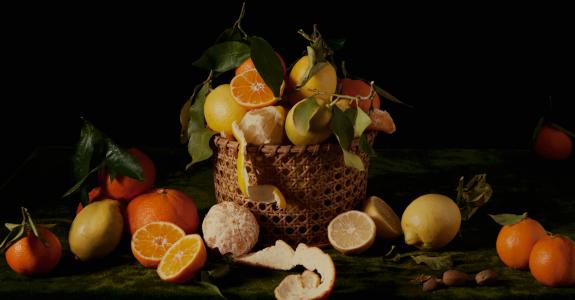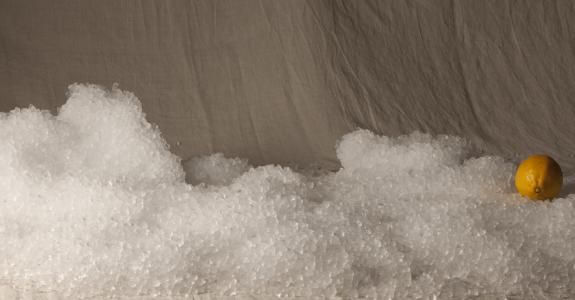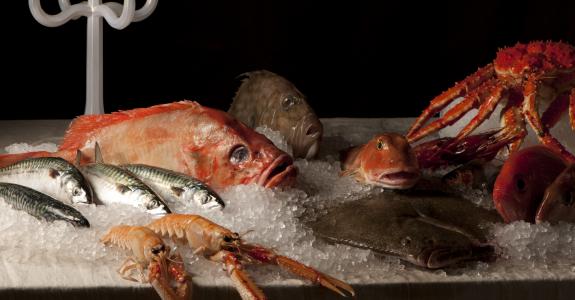The abundance of life
Photographs that recall seventeenth-century oil paintings – in Katharina Lütscher’s work, food regains its original beauty.
Andreas Kohli spoke with Katharina Lütscher
Katharina, for a number of years now you’ve been photographing food and people in a special way. At first glance your photographs recall Dutch oil paintings from the seventeenth century.
Yes, even as a child, I loved these old paintings. When I was a teenager, I spent a year as an exchange student in the town of Haarlem in Holland, where I studied the paintings of Dutch painter Frans Hals. That experience probably influenced me.
Are your images photographic copies of the Old Masters?
I really like the mood of these old paintings, their dark spaces and dim light. The dark pictorial space and weak light express an incredible tranquillity to the viewer. I also sense this tranquillity when I work in my studio. It’s really beautiful. I don’t do traditional vanitas paintings that focus on transience. I show the individual beauty and richness of life.
The light falls beautifully upon the objects in your paintings. How do you achieve this effect?
I start with the situation in the seventeenth century: the dark rooms with small windows that let in only very little light. I reproduce this situation in my darkened studio and work with a flash with a very narrow field of light. The light and the depth of field are extremely important to ensure that the surfaces have the desired effect.
What go you interested in still lifes?
I enjoy good food and own a lot of cookbooks. In many cookbooks you can hardly see the food in the photographs. All that you see are small tidbits against a white background. For me food is all about sensuality, colours and smells. The photographs in the cookbooks have the opposite effect – they resemble cold medical illustrations. My photography project arose from a counter-impulse: the desire to show fruits and vegetables in their natural beauty.
How do you select the objects?
Very spontaneously. I go to the market or the Turkish grocery. I often look for fruits and vegetables that have particular shapes that differ from those of standard industrial goods. I recently found very beautiful lemons, for example.
The food looks quite fresh in your photos, in contrast to that in the paintings by the Old Masters, which explore death and decay as their main themes.
Yes, I’m interested in the succulence of food, in the abundance of smells and colours. I portray lush, vibrant life. I also like the diversity and individual beauty of fruit. It’s wonderful what nature produces. I dislike the current trend toward standardising food. I dislike the artificiality of the products. My work is a response to all this. The food industry, even the top restaurants, seem very strained and exaggerated to me. Everything is taken to the extreme and, at the same time, it’s all becoming increasingly similar. People forget that eating a good apple can be an incredible pleasure, too.
Do you eat your still lifes after photographing them?
Yes, of course (laughing). That’s the beauty of it. Once, after taking some photos, I made lemon jam for a week. Another time I was able to supply my entire circle of friends with fish.
How did you come up with the idea of making a book with the artist Julia Sheppard that includes her work?
In addition to still lifes I photograph people, and Julia was one of my models. During a conversation, I hit upon the idea of doing a joint exhibition and a book with her. In order to raise the necessary funds we posted the project on wemakeit.ch. It was great! We mobilized a lot of people and were, in fact, able to raise the entire budget.
How do you explain the success? The visual aesthetic is indeed that of a bygone era.
Yes, but it provides a counterpoint to the rapid-fire, incidental photography that is popular today. My photos have a highly concentrated effect. At same time, the small dark space with weak light is relaxing and gives you the opportunity to be at one with yourself.




















